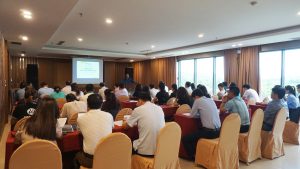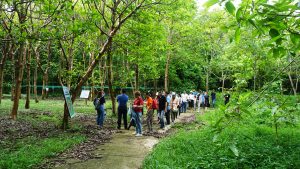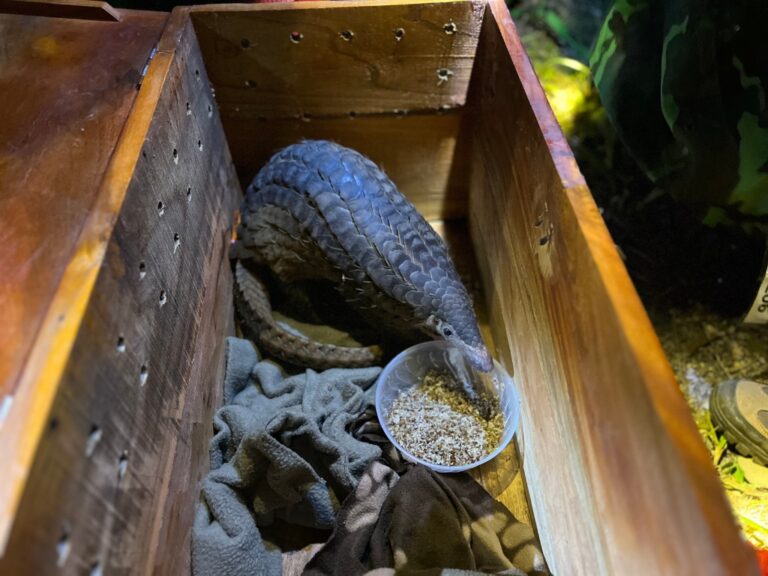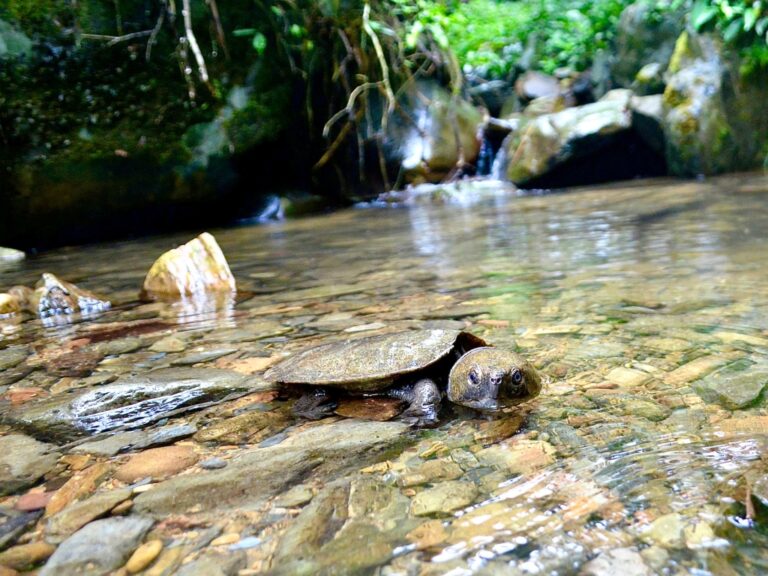On August 11 and 12, 2022, Save Vietnam’s Wildlife in collaboration with Pu Mat National Park successfully organized the Eco-tourism Promotion Workshop at Pu Mat National Park in Vietnam. The workshop was attended by nearly 40 delegates from the Vietnam National Administration of Tourism, the Department of Tourism of Nghệ An Province, the Investment, Trade and Tourism Promotion Center of Nghệ An Province, and 20 tour operators from across the country. The workshop was a precursor to the Eco-tourism Promotion Project currently being implemented by Pu Mat National Park and Save Vietnam’s Wildlife.
The purpose of the workshop was to connect tour operators with the natural potential of Pu Mat National Park by introducing the beautiful and diverse natural resources and landscapes of the Pu Mat mountains, along with the cultural diversity of the local ethnic people. The workshop aimed to provide a fresh perspective on Pu Mat tourism and to seek potential investors who could bring unique eco-tourism products, support local economic development, and especially promote the livelihoods of the core and buffer zone communities of Pu Mat National Park.

Photo © SVW.
One of the highlights of the workshop was the introduction of new routes for exploration and experience, including trekking through the strictly protected forests, climbing the peaks of Pu Mat mountains to hunt for clouds and admire the majestic landscape of the primary forest, experiencing the biodiversity of the Pu Mat mountains, and interactive and experiential programs for students. Additionally, there was a combination of unique cultural tourism at ethnic minority villages in the area.
During the workshop, Ngo Minh Hanh, General Administration Officer of Pu Mat National Park, presented an overview of the park, along with the challenges and advantages of eco-tourism development in the park, as well as the park’s plans for eco-tourism development in the future.
During a workshop, the leaders of Pu Mat National Park spent time discussing with tourism agencies on how to collaborate between the two parties, as well as leading the Q&A session to address all concerns from the tourism agencies regarding connectivity and business cooperation, in order to create the most favorable conditions for tourism agencies that desire to cooperate in promoting ecotourism activities at Pu Mat National Park in the near future. After the workshop, the delegates visited some of the current tourist destinations being operated by the Park, as well as providing practical guidance to the delegation on potential locations that could be developed for tourism in the future.

The delegates visited the nature experience area for students at the Headquarters of Pu Mat National Park – one of the new destinations introduced at the conference. Photo © SVW.
Tran Xuan Cuong, the Director of Pu Mat National Park, who chaired the conference, said, “The conference is an important event, demonstrating efforts to overcome difficulties and develop the tourism industry of Nghệ An province in general and Pu Mat National Park in particular, amidst the negative impact of the COVID-19 pandemic. At the same time, it also reflects the sense of responsibility of the parties involved in protecting the forest, conserving wildlife through the development of sustainable livelihoods for local communities. He also expressed his willingness to cooperate with domestic tour service providers in implementing eco-tourism activities at Pu Mat National Park in the future.
Regarding the conference, Mr. Nguyen Quy Phuong, Head of the Tourism Department at the Vietnam National Administration of Tourism, expressed his joy and excitement at the proactive efforts of Pu Mat National Park to introduce and connect with travel companies to develop tourism and livelihoods for the local community. He said, “Rural tourism is an inevitable and encouraging trend. The potential for rural landscapes (mountains, forests, rivers…) in Vietnam is still largely untapped. In addition, the diversity of ethnic groups living together has created unique cultural characteristics in different regions. Pu Mat National Park possesses all of these potentials, and these rich resources will contribute to the growing development of rural tourism in this area.”
Nguyen Van Thai – SVW’s Executive Director also shared about the necessity of creating alternative livelihoods for the local communities living around the buffer zone of Pu Mat forest, as well as national parks and conservation areas in Vietnam in general. “I hope that after the workshop, travel companies will serve as a bridge to introduce Pu Mat National Park and the unique cultural identity of the ethnic minority communities here to more tourists. This will increase the number of visitors who come to visit, experience, study and learn at Pu Mat National Park each year. From there, we can spread love for nature, conservation messages to the community more strongly and widely, and especially bring a certain source of revenue to the park to serve conservation and scientific research work in the future. Moreover, developing eco-tourism will contribute to creating alternative livelihoods for the local people through tourism services with more stable income, thereby reducing their negative impact on forest resources, and effectively and sustainably protecting wildlife and nature.”
The Ecotourism Promotion Workshop for Pu Mat National Park has concluded successfully with valuable contributions and positive feedback from travel agencies involved in tourism activities in the Park. Pu Mat National Park and SVW hope that the workshop will bring new opportunities to promote and develop sustainable ecotourism in the region. Through cooperation with travel agencies, the image of Pu Mat National Park will be widely disseminated, which can attract visitors to explore and experience the Park as well as learn about the unique cultural characteristics of the local people. This can generate income for the Park and provide stable livelihoods for the local people, towards the goal of conserving the sustainable biodiversity of the Pu Mat Mountains.



